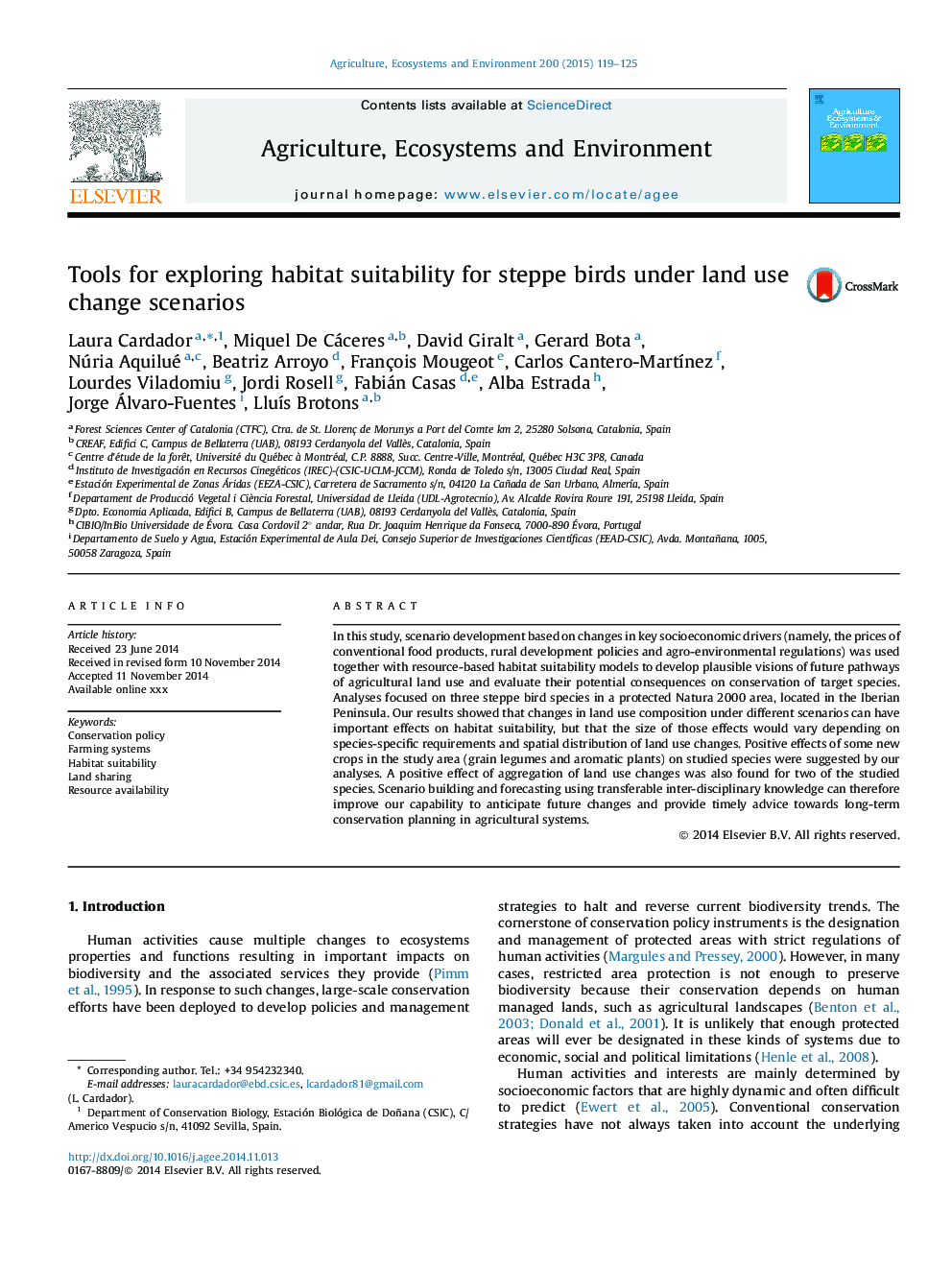| Article ID | Journal | Published Year | Pages | File Type |
|---|---|---|---|---|
| 8487800 | Agriculture, Ecosystems & Environment | 2015 | 7 Pages |
Abstract
In this study, scenario development based on changes in key socioeconomic drivers (namely, the prices of conventional food products, rural development policies and agro-environmental regulations) was used together with resource-based habitat suitability models to develop plausible visions of future pathways of agricultural land use and evaluate their potential consequences on conservation of target species. Analyses focused on three steppe bird species in a protected Natura 2000 area, located in the Iberian Peninsula. Our results showed that changes in land use composition under different scenarios can have important effects on habitat suitability, but that the size of those effects would vary depending on species-specific requirements and spatial distribution of land use changes. Positive effects of some new crops in the study area (grain legumes and aromatic plants) on studied species were suggested by our analyses. A positive effect of aggregation of land use changes was also found for two of the studied species. Scenario building and forecasting using transferable inter-disciplinary knowledge can therefore improve our capability to anticipate future changes and provide timely advice towards long-term conservation planning in agricultural systems.
Related Topics
Life Sciences
Agricultural and Biological Sciences
Agronomy and Crop Science
Authors
Laura Cardador, Miquel De Cáceres, David Giralt, Gerard Bota, Núria Aquilué, Beatriz Arroyo, François Mougeot, Carlos Cantero-MartÃnez, Lourdes Viladomiu, Jordi Rosell, Fabián Casas, Alba Estrada, Jorge Álvaro-Fuentes, LluÃs Brotons,
